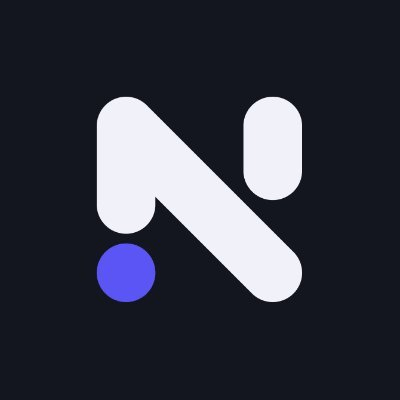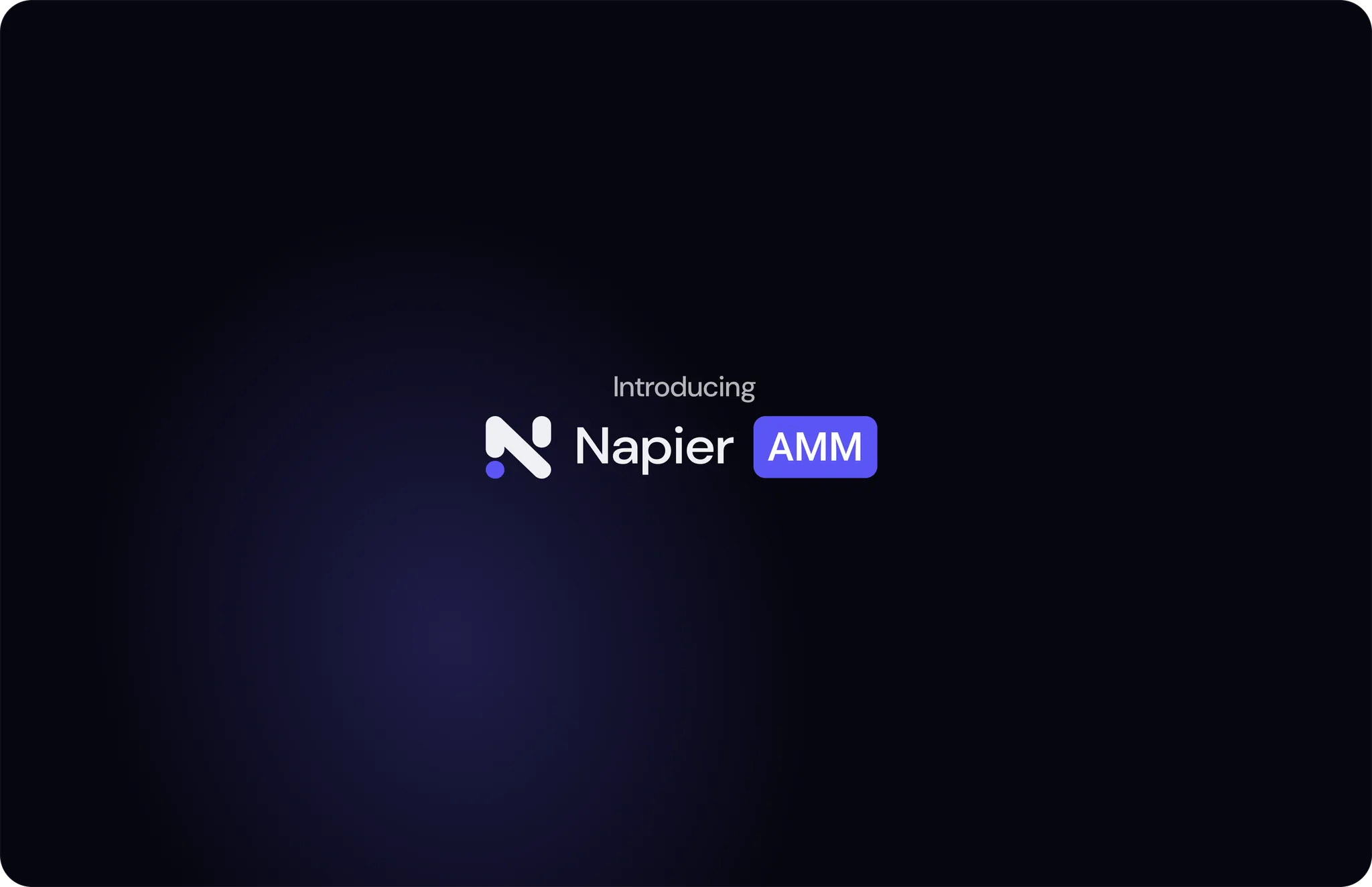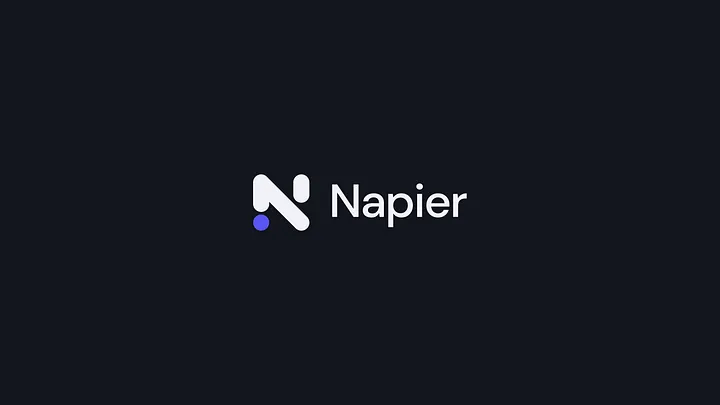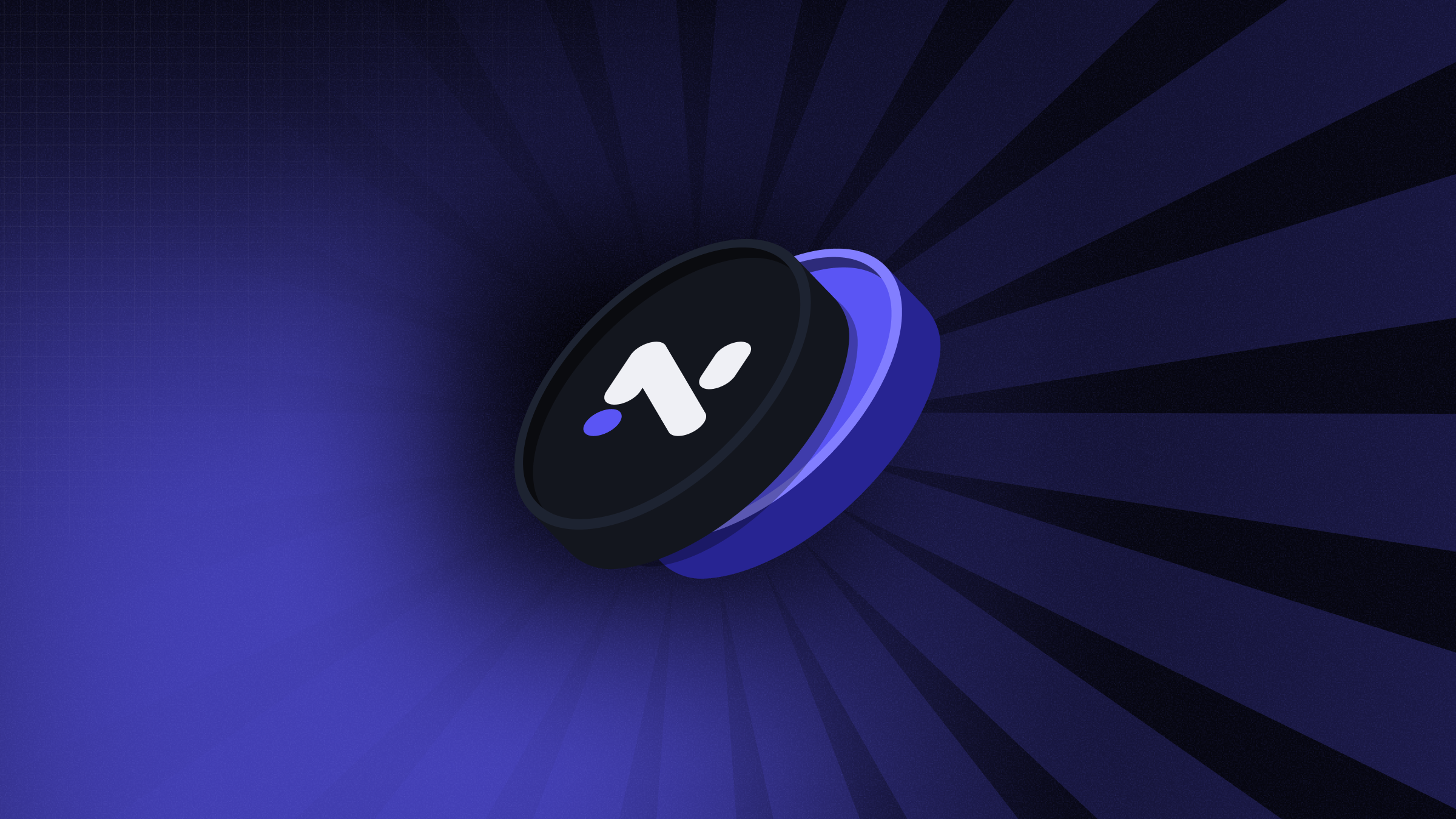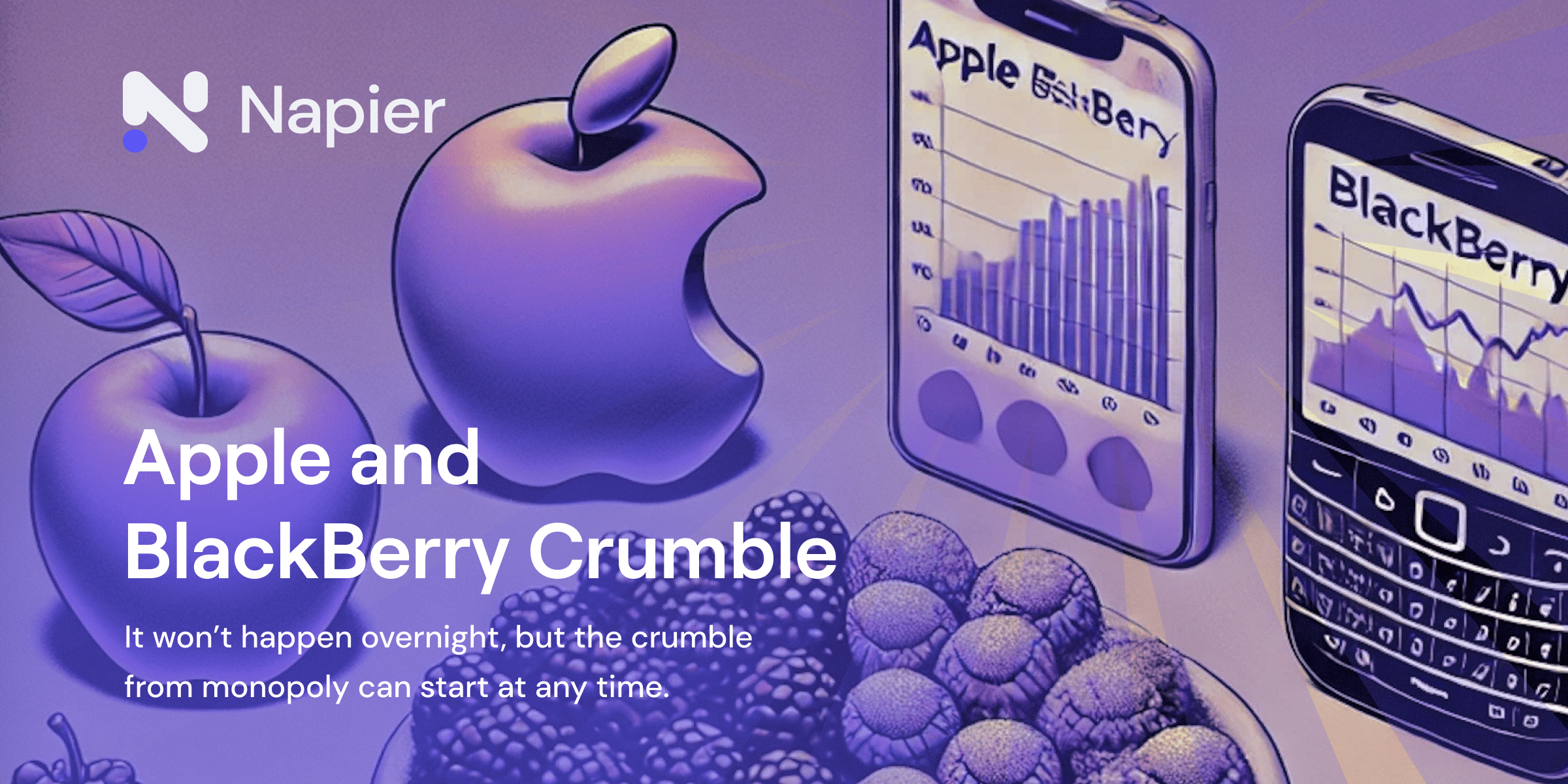
Apple and BlackBerry Crumble (and Scaling DeFi)
It won’t happen overnight, but the crumble from monopoly can start at any time.
Remember the days when everyone was playing Snake on their Nokia? Your dad might still have a Nokia 3310 tucked away somewhere. Do you recall the groundbreaking Motorola flip phone? And what about the craze surrounding BlackBerry Messenger? Maybe? BlackBerry's eventual struggle to adapt to market demands in the face of the iPhone's rise is also a noteworthy point of view.
BlackBerry peaked in 2008, with a market capitalization approaching $80 billion, commanding over 50% of the U.S. smartphone market and 20% globally. Yet, just a few years later, their presence faded significantly.
Why did this happen? The answer lies in their stubbornness.
Yes, this is the Apple and BlackBerry Crumble thesis.
Apple and BlackBerry Crumble
There are several reasons cited for BlackBerry's decline, with most stemming from the "classic innovator's dilemma." Despite once holding the most superior product on the market, BlackBerry clung too tightly to its past successes while the world transformed around it with the rise of Apple's iPhone.
For instance, when the market shifted to smartphones, BlackBerry had an excellent feature phone. They established a solid position in the enterprise sector and later gained popularity among consumers. However, they made the typical mistake of trying to cater to both markets, ultimately failing to satisfy either. Even after consumers began demanding touchscreens, they stubbornly maintained their keyboards and small screens for far too long.
Moreover, BlackBerry was notably hesitant to embrace external developers and the third-party ecosystem. They struggled to offer an attractive development platform for developers. It seemed they grossly underestimated the power of a developer ecosystem. As app developers gravitated towards iOS and Android, BlackBerry's platform found it increasingly challenging to meet the diverse needs of users craving various applications, leading to a gradual decline in its appeal.
In contrast, Apple and its iPhone, along with the App Store, excelled in this area. The introduction of the App Store enabled developers to easily create and distribute apps. This resulted in a wealth of applications that allowed users to customize their smartphones to suit their needs.
Applications like Zynga, Instagram, Spotify, Uber, and WhatsApp gained explosive user adoption during this time, becoming staples for nearly every smartphone user. The App Store provided developers and companies with the freedom to create functional and profitable products built on its platform.
And, yes, this is the Apple and BlackBerry Crumble thesis.
Today in DeFi
Let’s take a closer look at the current state of DeFi. What’s happening?
Today, most DeFi projects offer direct incentives—through native tokens or rewards from external projects—to users, particularly liquidity providers. While this approach often generates short-term hype and speculation, it can lead to economically unsustainable practices.
When platforms offer only direct incentives to users, it’s akin to an app store providing cashback for every download or purchase. Like this strategy, commonly seen in non-crypto markets, effectively offsets switching costs between services. However, its impact is typically limited to the short to medium term. Eventually, projects face sustainability issues with such incentive models, exposing the intrinsic value—or lack thereof—of their products.
Surprisingly, this pattern is prevalent across many current DeFi projects, signaling potential issues with incentive structures and long-term viability (If your goal as a founder is simply to extract capital during a short-term bull cycle, this may not concern you).
Reflecting on the earlier example, the flourishing iOS ecosystem today wouldn’t exist without a robust development environment, economic rationals, and flexible frameworks that drove developers to enrich the App Store with content and utility.
Rewarding work outsourced to the market while granting flexible authority may be a prerequisite for platform scalability. This encourages more developers to contribute utility, enhancing the overall value the platform offers. Such an approach fosters a sustainable flywheel independent of incentives. And, if a platform undervalues flexible development frameworks or third-party ecosystem contributions, it risks repeating BlackBerry’s mistakes.
In fact, some projects are beginning to recognize this. A few have started outsourcing complex risk management and economic activities to open markets and their participants. Lending protocols like Morpho, Euler v2, and Silo v2; vault projects like Veda and Yearn; staking platforms like Mellow; launchpads like Fjord; DEXs like Uniswap v4 and Valantis; and, of course, Napier are leading examples of this shift.
Where We Should Be Headed
The domain of "Yield Tokenization" was introduced as a concept in 2020. Over time, this approach has proven to be the most primitive method for adjusting the amount of yield over a fixed time frame with each block time.
At Napier, we have spent over three years developing within this focused vertical since 2021. Even projects like Pendle required nearly four years to establish a solid foothold in this space.
Acknowledging Pendle’s relative success is crucial. The approach taken by its core team to manage complex products has proven to be an effective strategy, enabling the platform to grow from zero to a multi-billion-dollar scale.
However, as the market and user base expand, structural limitations may hinder scalability from the current market size to a multi-trillion-dollar level.
Yet, simply building permissionless infrastructure is not enough, as users consistently seek feature-rich and efficient products. Platforms must encourage active and sustained participation from contributors capable of meeting these comprehensive user needs.
Napier v2 addresses the limitations of conventional yield tokenization protocols, aiming to become the primary yield derivatives layer for on-chain finance. Its modular architecture supports scalability beyond the existing DeFi market and aligns with everyone’s needs. It offers a permissionless design space for PT and YT, coupled with economic and authoritative flexibility, seamlessly integrating across the DeFi ecosystem (Details about Napier v2's overview are explained in the previous article here.
Projects and companies building yield derivative products no longer need to develop their own codebase or fork unfamiliar ones. They can build without compromising user needs to gather token-holder votes.
With Napier Finance, you can build freely and permissionlessly. This drastically reduces trust assumptions, enhances efficiency, and unlocks unlimited creativity for products built on top of it.
However, even if this idea succeeds, our efforts alone won’t be enough to tackle the overarching issues within this sector. As a community, we must do the following:
- Openly discuss the shortcomings of existing models.
- Seriously consider the importance of third-party contributions.
- Foster open-source codebases and development frameworks.
If this article has sparked ideas or perspectives on how to design a better and more scalable DeFi system, we would love to hear from you. We’re eager for insightful responses, ideas, and suggestions. Based on these, we are confident we can dramatically improve the current state of DeFi!
Other Initiatives in the Yield Tokenization
- Pendle is creating a supportive environment for third-party ecosystems by providing rich documentation and user-friendly APIs and SDKs for developers.
- Spectra offers only three types of permissionless pool creation processes for end users
Conclusions
Overall, we hold a deep respect for the numerous existing attempts that have inspired us in building this idea.
However, much like BlackBerry disappeared from the market, reluctance to fully harness the potential of an app ecosystem can limit a platform’s long-term scalability. As the market and user base grow, the increasing burden and cost of management may reveal structural flaws that hinder scaling.
Yet, there is a glimmer of hope. Napier seeks to transcend those limitations and build a truly open ecosystem with infinite possibilities. What we’re building is not just a product; it’s the very foundation of future financial infrastructure.
Stay tuned for what we are building at Napier Labs. Spoiler alert: various initiatives are on the roadmap, ranging from smart contracts to user-facing interactions. Scaling the ecosystem is our overarching design goal of Napier product lines.
